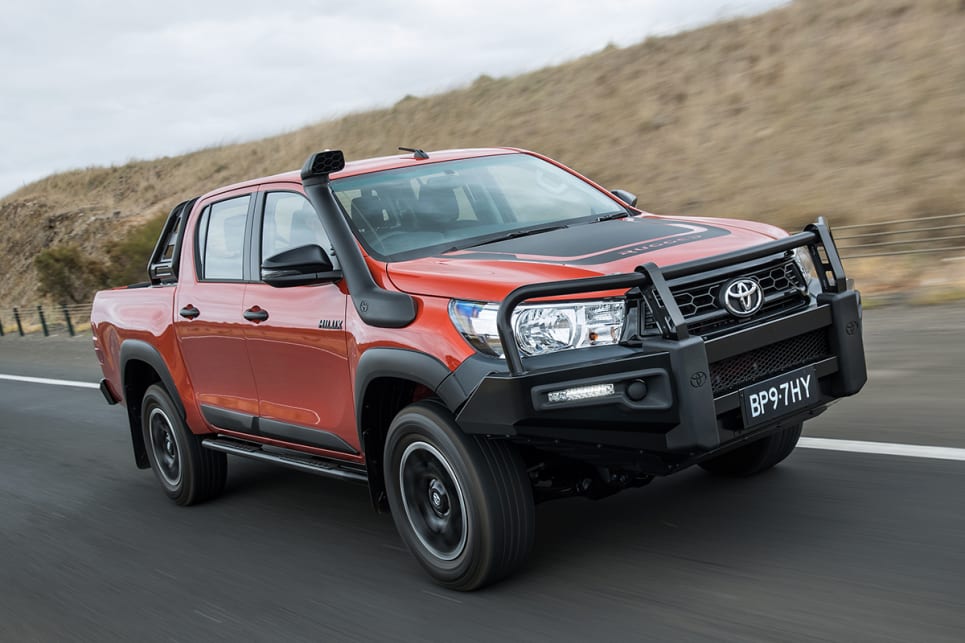
What to do if you hit a kangaroo with your car

Ah, sweet Australia, our beloved sunburnt country: a land of footballs, meat pies ... and bouncing mongrel roos that can cause a catastrophic amount of damage if you’re unfortunate enough to hit one with your vehicle.
What should you do if you hit a kangaroo (or any animal, for that matter) with your car? It boils down to this: pull over as soon as it’s safe to do so; approach an injured animal very carefully as it may lash and inadvertently hurt you (it’s happened before); if able to do so safely, check if the roo is alive (if it is dead, then check its pouch); call the relevant wildlife rescue service or police; and take the roo to the nearest vet, if possible and safe to do so, or wait for assistance. If your vehicle is not safe to drive because of any damage sustained in the collision, stay put.
But, there’s a lot to more to consider than merely those salient points, so read on.
Where in Australia are you most likely to encounter kangaroos?

You may see roos along the coastal regions, in the country and in the outback. Because of drought conditions, kangaroos are now even venturing into suburban areas more than ever. But, if you drive in rural areas, a collision with a kangaroo, or other native or even domestic animal, is a distinct possibility. (FYI: a vehicle-and-animal collision is also known as an animal strike.) According to an insurance company’s report, release in June 2019, more than 7000 drivers are involved in, and claim for, kangaroo collisions in Australia per year. The Huddle Insurance 'Roo Report'* states that kangaroo collisions cost Aussie drivers on average more than $6 million per year in excess on insurance claims; the average cost of damage to a vehicle in the event of a kangaroo collision is $4000; and 15% of vehicles (more than 1000) involved in kangaroo collisions are written off.
When do most roo collisions occur?
Roo collisions occur mostly in the dawn or dusk hours, or in the full cool of the night, so it’s a good idea not to drive at those times. Roos are generally sleeping off a feed during the hotter times of the day. But that’s not to say that animal strikes never occur in daylight hours – they do – they’re just more likely to happen during those cooler times of the day when the mobs are moving around.
How to avoid hitting kangaroos

Avoid driving at the times I just mentioned (above); besides, you should be at camp anyway, cooking brekky (if it’s dawn) or drinking a bottle of ice-cold happy water (if it’s dusk).
Look a long way ahead and off to both sides of the road you’re driving on, in order to detect any animal movement a long time before you might have to react.
If you see any roos or animals near the road slow down to 20km/h or even less to give you plenty of time to brake or manoeuvre around the animals. Animals, especially roos and emus, act erratically when they’re spooked by a vehicle and may dart across in front of your vehicle without any warning.
What to do when you hit an animal
Pull over as soon as it’s safe to do so.
Approach an injured animal very carefully as it may lash out and inadvertently hurt you (it’s happened before). The Victorian government’s Department for Environment, Land, Water and Planning warns on its ‘Help for injured wildlife’ website: “Caution! This animal [a kangaroo] has a strong kick and sharp claws and may be dangerous. Do not approach the animal or attempt to catch it. Remember the animal is wild and may feel stressed or threatened by your presence - stay calm, speak softly, move slowly and keep any pets away to avoid stress to the animal. If the animal has been injured during a road collision, keep yourself safe and ensure you are not in danger of being hit by traffic.”
If able to do so safely, check if the roo is alive; if it is dead, then check its pouch.
Call the relevant wildlife rescue service or police.
Take the roo to the nearest vet, if possible and safe to do so, or wait for assistance.
If your vehicle is not safe to drive because of any damage sustained in the collision, stay put.

How to report injured wildlife
Make sure you always report injured wildlife, whether it’s an injured kangaroo or a wombat hit by a car.
The nationwide contact is Wildlife Rescue and the number is 1300 596 457, an injured wildlife hotline.
For injured wildlife in and around Canberra, contact RSPCA ACT 02 6287 8100 (during business hours), or WIRES (NSW Wildlife Information and Rescue Education Service) on 1300 094 737. For injured kangaroos in the area, call 13 22 81.
For injured wildlife in NSW: WIRES on 1300 094 737.
For injured wildlife in Brisbane, call RSPCA Queensland on 1300 264 625.
For injured wildlife in Victoria, call Wildlife Victoria on 03 8400 7300.
For injured wildlife in Melbourne, call Warriors 4 Wildlife on 0401 811 937.
For injured wildlife in Western Australia, call Wildcare on 08 9474 9055.
For injured wildlife in Tasmania, call Wildlife Management Branch on 1300 827 727.
For injured wildlife in South Australia, call RSPCA SA on 1300 477 722.
For injured wildlife in the Northern Territory, call Wildcare on 08 89 886 121 or 0408 885 341.
What if you hit a different type of animal?

The process remains the same as the one detailed above: be safe, check the animal if it’s safe to do so, and contact a wildlife rescue service as soon as possible after the collision.
If it's a domestic animal, such as livestock, then contact the nearest vet.
Does standard car insurance cover damage caused by hitting a roo with your car?
No, but a comprehensive policy may cover you. However, beware, because if you claim on an animal collision, your premiums will likely go up as your insurer will pass the costs on to you. You’ll probably lose any no-claims bonus as well.
Ask around, do your research and find a mob that will help you, more than hinder you (read: rip you off), in the aftermath of an animal strike.










Comments